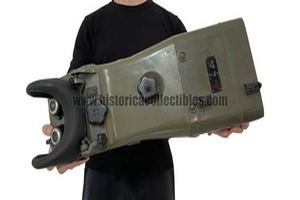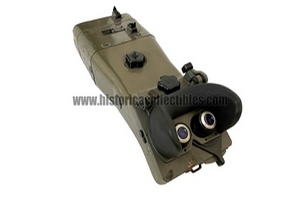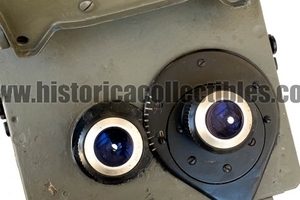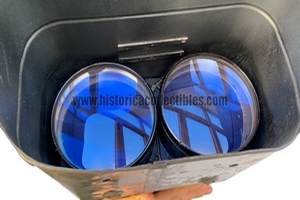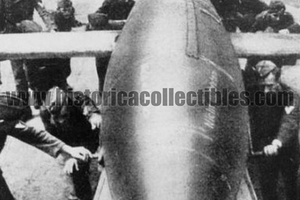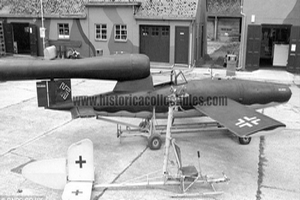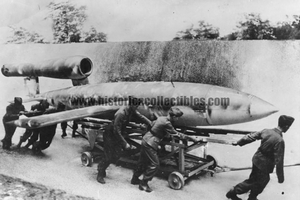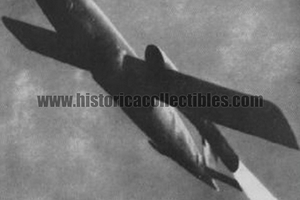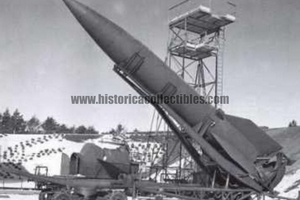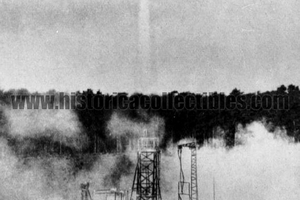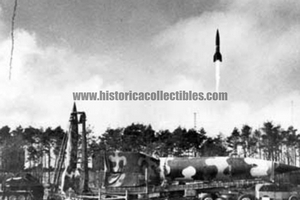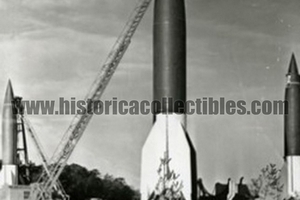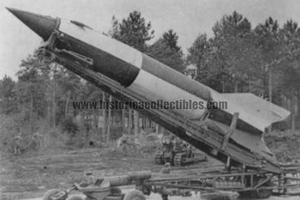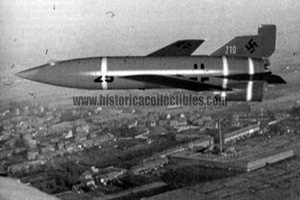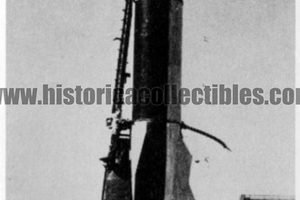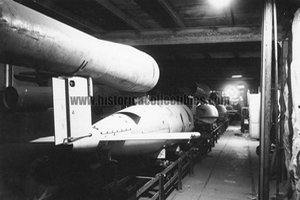Doppelfernrohr D.F. 25x100 "flm" Feinapparate Bau GmbH, Werk Thurn, (short Model), circa 1944
Doppelfernrohr or Binoculars/Telescope D.F. 25x100 (Short Model), produced in Teplice by "flm" encrypted code name of "Feinapparate Bau GmbH, Werk Thurn" (Czechoslovakia) (at the disposal of Oberkommando der Wehrmacht), a company founded in 1939 by Carl Zeiss Jena and controlled until May 1945.
This bino/telescope has unusual and interesting features, such as: the visual inclination of 60°, the adjustment of the interpupillary distance occurs by moving a lever under the right eyepiece assembly which rotates the assembly itself eccentrically, the prisms have a system of light-reflecting surfaces to obtain a very bright image even in low light conditions. You can select two filters (one light gray and one dark) by turning a small knob with "farbgläser" written on it (which means, precisely, colored glass).
There is a headrest (which can be raised and lowered) to make vision more comfortable and stable. A large knob on the front/top operates and tightens a clamp on the bottom for attachment to the rangefinder. The eyepieces, of orthoscopic design, are made up of four elements including an aspherical and parabolic lens with the consequence of having a large, clear field of vision.
The large 100 mm lenses, with anti-reflection treatment (a system developed and patented on 1 November 1935 by Aleksander Smakula, member of the Zeiss staff in Jena since 1934), allow extremely bright view even during night observations.
Furthermore, the most obvious detail that we notice on this Bino-Telescope is the much shorter rain cover element compared to the same more well-known models, in fact it does not have the sun protection filters which were contained inside it. By carefully examining this detail, we note that this modification took place in the factory as there are no differences (other than the length) from the rain cover used on identical models previously built.
Therefore it is plausible to think that, towards the end of the war, this model of bino-telescope underwent this modification probably dictated by the more practical use as well as to improve its optical performance, as the presence of filters inside the rain cover limited the light entry, making vision less bright.
The first 25x100 binoculars produced were made by Zeiss with "blc" code, subsequently starting from 1944 and only until the beginning of 1945, Zeiss moved the production of these telescopes to "Teplice" factory in what is now the Czech Republic, producing only 3000 specimens marked in encrypted code "rln". This production is to be considered extremely important as it should have been installed on 6 meter rangefinders, capable of controlling and following the trajectories, even at night, of the weapon that Nazi Germany considered as a decisive turning point for the victory of the Second World War, the modernized “V1” and the deadly “V2” missiles.
After the war the factory was nationalized and some of these binoculars, which were not delivered to the Wehrmacht, were exported to Sweden, others completely disassembled and cosmetically modified to then be sold on the civilian market under the "Somet" brand and later as "Meopta" ( Company which brought together four large Czechoslovakian companies established around 1950); a very limited number were acquired by the French Armed Forces as war damage repairs and were never used.
In July 1992, the American magazine “Sky & Telescope” published an article about members of a Czechoslovakian Astronomical Society. This Society discovered 18 comets from 1946 to 1959 using 25x100 binoculars produced in Czechoslovakia by Carl Zeiss Jena, during World War II.

